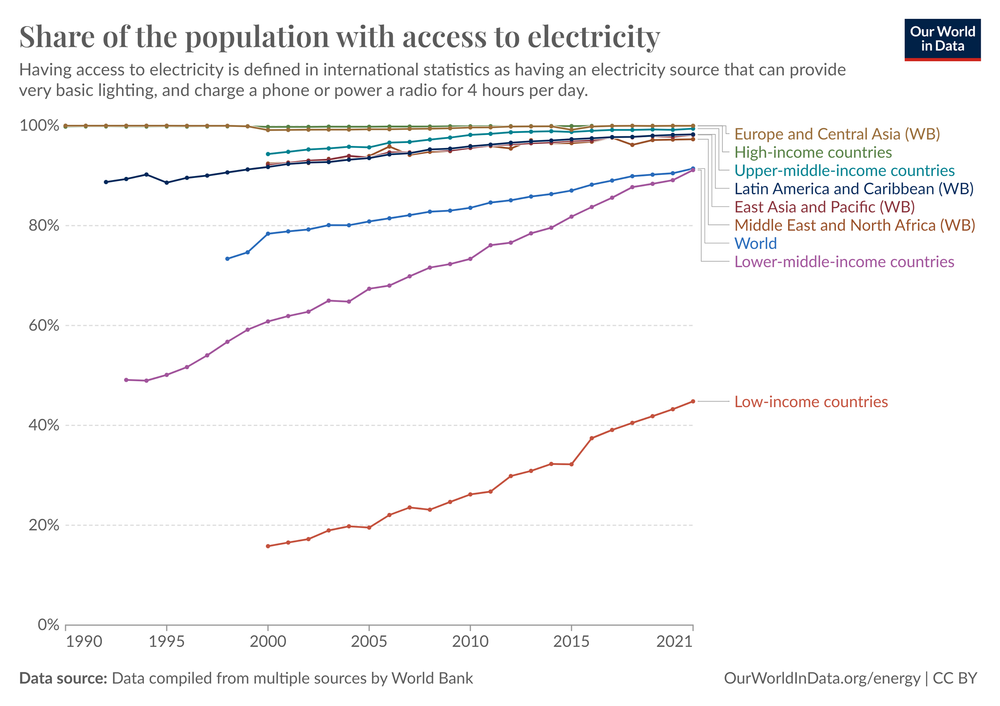
SDG #7 is to “Ensure access to affordable, reliable, sustainable and modern energy for all.”
Within SDG #6 are 5 targets, of which we here focus on Target 7.1:
By 2030, ensure universal access to affordable, reliable and modern energy services
Target 7.1 has two indicators:
Indicator 7.1.1: Proportion of population with access to electricity
Indicator 7.1.2: Proportion of population with primary reliance on clean fuels and technology
The obvious importance of electricity access lies as it’s a marker of living standards, as well as a necessity for health.
The World Bank has measured access to electricity worldwide to be 91% as of 2021. To break this up, Europe and Central Asia have full electrification, as do the high-income and the upper-middle income countries. The regions of the Middle East and North Africa, Latin America and the Caribbean and East Asia and the Pacific have between 97-98%. The lower-middle income countries have a similar proportion to the global population. 45% in low-income countries have electricity.
As we saw in Target 3.9, air pollution from stoves burning solid cooking fuels in households in some developing countries is a health risk. By contrast, in high-income countries, households tend to use cooking and energy methods not posing a health risk. Dirty fuels also pose affect the environment and contribute to climate change.
The World Health Organization estimates access to clean cooking fuels to be 71% of the world population.
View fullsize
View fullsize
